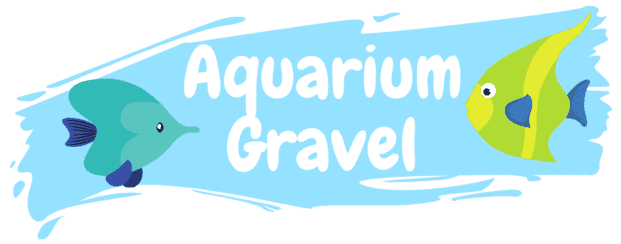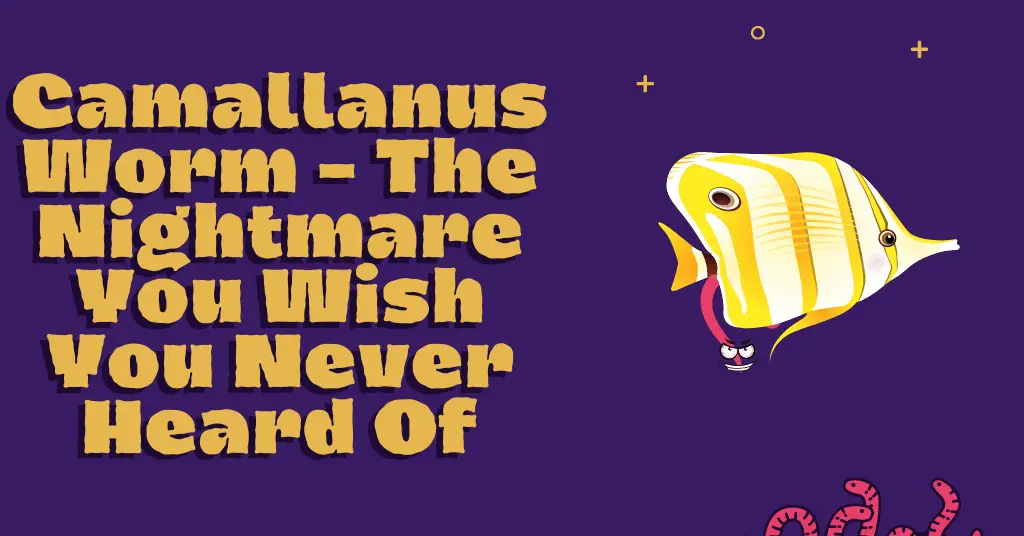Last Updated on July 4, 2021 by cmoarz
Camallanus worms are a nightmare that you wish you never heard of. These tiny creatures can make life pretty difficult for their intermediate host, and it is important to know all the facts about them so you can take the necessary precautions. Read on to find out what camallanus worms are, how they affect your fish and why they should be taken seriously.

What are camallanus worms?
Table of Contents
Camallanus worms (Aka: red worms) burrow into the intestine of their intermediate host. They are parasites that affect fishes such as goldfish, koi and common carp, and other tropical fish by living in their intestines feeding off the blood which can lead to many complications, including a buildup of intestinal gas that becomes buoyant, and wasting.
Camallanus worm larvae have 3 stages
Stage one: When first laid they are considered stage one larvae. They float around until they find a food source fish or crustaceans will eat in order to hitch a ride inside one of these creatures. Once the food is eaten, the fish or crustacean is then infected.
Stage two: Once inside the unsuspecting intermediate host, they get to work right away. At this stage, they will begin to molt, as well as actively feed on the blood of the host.
This is where they will remain as they transition into stage three, adult worms.
Stage three: Full adult worms have a maximum length of about one inch. These red worms will often hang out of the *ahem* well, Their name says it all.

What are the signs of an infestation I should look for?
The most obvious sign is a worm sticking out of your fish’s rear end. This is very commonly the stage most people will notice there is a problem.
When you see this, it means the worm infestation is quite severe, and immediate action will be necessary.
Other signs of an infestation are blood in the fish’s feces and a bloated belly that is much larger than normal for your particular species. This is caused by a distended stomach.
The larger it hangs, the more worms the fish is likely to be harboring.
Your fish may begin to appear thinner. This is called wasting and it’s a pronounced symptom of this worm infestation. She may also appear to lose interest in food altogether.
It’s pretty gross to think about, but actually, the worms may be triggering the internal mechanism in the stomach to signal that she is full and no longer requires food. Fascinating and terrifying.
Strange and unusual swimming activity may be present after the infestation is well into its mature stage. Lethargy, swimming in place, overall being ‘weird’.
Can Camallanus Kill your Fish?
Yes, Camallanus worms can kill your fish. It is important to take these little buggies seriously because they can wreak havoc on your fish’s health. If you notice any of the signs of an infestation, take swift action.
Chances are good if there is one intermediate hosts in your tank that has it, all the fish in the tank are likely to have it. And because of where the initial larvae may have come from, all additional tanks in your house. I’ll get into that lower in the article.
How to get rid of a camallanus worm infestation
The best thing you can do is treat your whole tank completely with an appropriate anthelmintic medications that will paralyze the adult camallanus worms so the fish’s own digestive tract can deal with the intruder and expel them.
There are some important considerations to know of before you start medicating your aquariums.
First: These anthelmintic medications do not kill the worms. They simply allow the host to expel them. It’s up to you to do very thorough tank maintenance in order to catch and remove all eggs, larvae, and adults.
There is usually a time when you should begin doing this after medicating, check with the particular medication instructions. Usually, though, it’s 3 days after medication has been administered.
Second: If you have any crustaceans or gastropods (shrimp and snails) in your tank, they should be removed before medicating. The medications contain various types of metals and other compounds that are poisonous to these sensitive creatures and will kill them.
Consider moving them to a temporary holding tank until the treatment cycle has been completed.
Third: Rinse and repeat. Every 3 weeks until you’re certain you’ve managed to get rid of all the larvae.
Not all fish can be medicated the same way, so be sure to speak to your veterinarian first to make sure you’re not going to accidentally kill your fish while trying to treat them.

How do camallanus worms get into your tank?
Remember when I said there is a good chance the rest of your tanks in the house are also infected? That’s because oftentimes these worms come from live foods that have already been infected.
So if you feed your fish live brine shrimp or other types of worm, there is a really good chance that they are infected.
The eggs can latch onto the food and be transferred over to your tank when you feed them to your fish. It’s important not only to monitor their health but also what goes into their tanks so you don’t introduce more camallanus larvae through these methods.
Food isn’t the only thing that causes the introduction of these devastatingly creepy worms. Live plants can also harbor floating larvae, and when placed into the tank, subsequently eaten by the new host, Your beautiful, expensive fish.
Sometimes people jump the gun and don’t quarantine new fish before adding them to the main tank. These fish can often already have the parasite present at that time, which will cause the rest of the tank to become infected.
The moral of the story is not to skip the quarantine tank! Be sure to always check the source you get your live fish food from, and if you do confirm an infection came from a food source, contact the supplier right away and let them know!
It’s very important to let them know so they can deal with the issue and slow down the harm an entire botched batch could have on people’s aquariums.
What to do after treatment
It’s important to do thorough tank maintenance after medicating your aquarium. The larvae can still be present, even if they are paralyzed and not moving around on their own anymore.
If you don’t catch them before the medication wears off, there will be nothing stopping them from reproducing again into stage two and three of adulthood which means the problem is only going to get worse for all fish in that tank!
Keep up your regular water changes, gravel vacs, and general cleaning.
Inspect the tank for eggs or larvae on a regular basis (which means every day).
It’s important that you don’t stop at just medicating your fish! Much like antibiotics, you need to do the full course every 3 weeks or as often as the instructions on the medication say.
It will take work on your part too in order to ensure all stages of camallanus worms get removed without being reintroduced into another aquarium through faulty quarantine practices or, reinfecting a current tank.
Remember: The best defense against these parasites is diligence! Be sure to inspect everything going into your tanks and only buy from reliable breeders and food sources.
How to keep camallanus worms out of your fish tank
Remember the multiple ways camallanus worms can get into your tank?
One way to prevent them from getting in is by not buying live food. If that’s not possible, Consider breeding your own live feeders. It’s not as difficult as you think, and it’s actually pretty fun.
The second method of prevention is quarantine tanks! If you aren’t in the habit of using them, Get into it. It’s a lot safer for you and the fish.

About
Owner of AquariumGravel.com and also owner of actual Aquarium Gravel believe it or not! ;). Setting up beautiful aquarium sceneries and habitats since I was very young. Enjoy!
- Web |
- More Posts(290)

